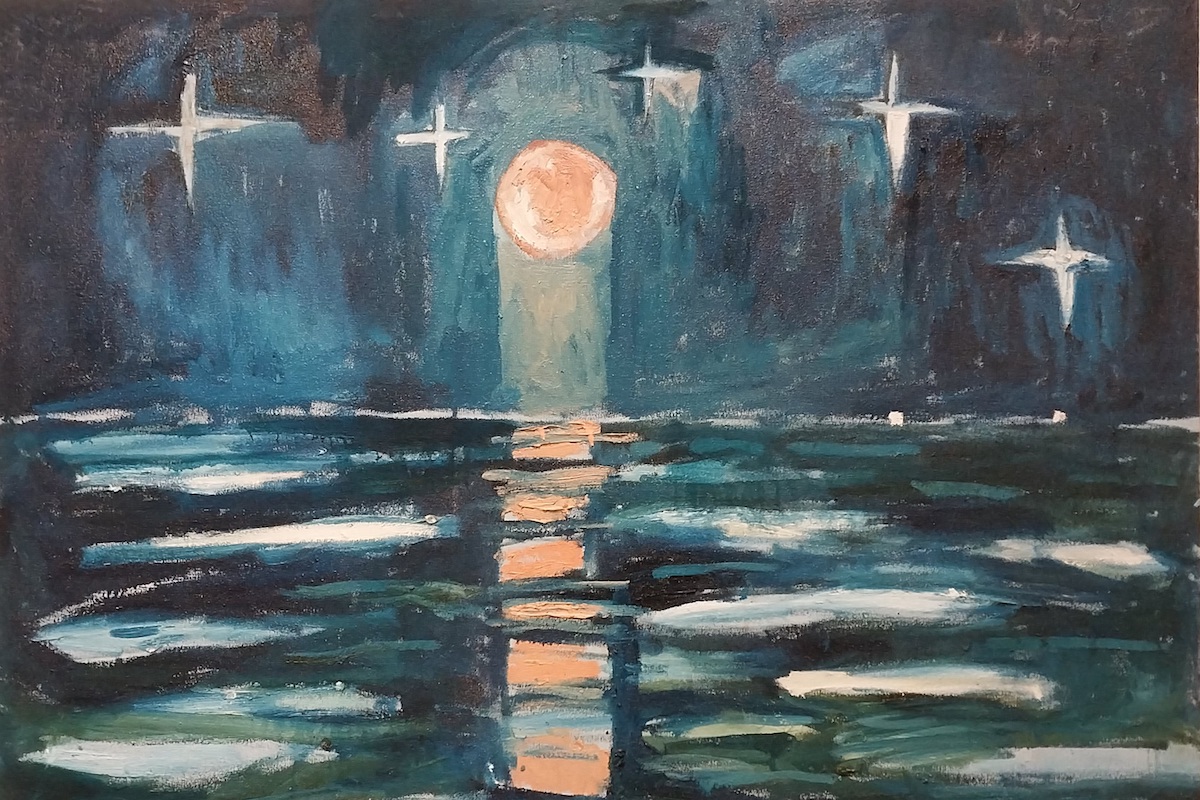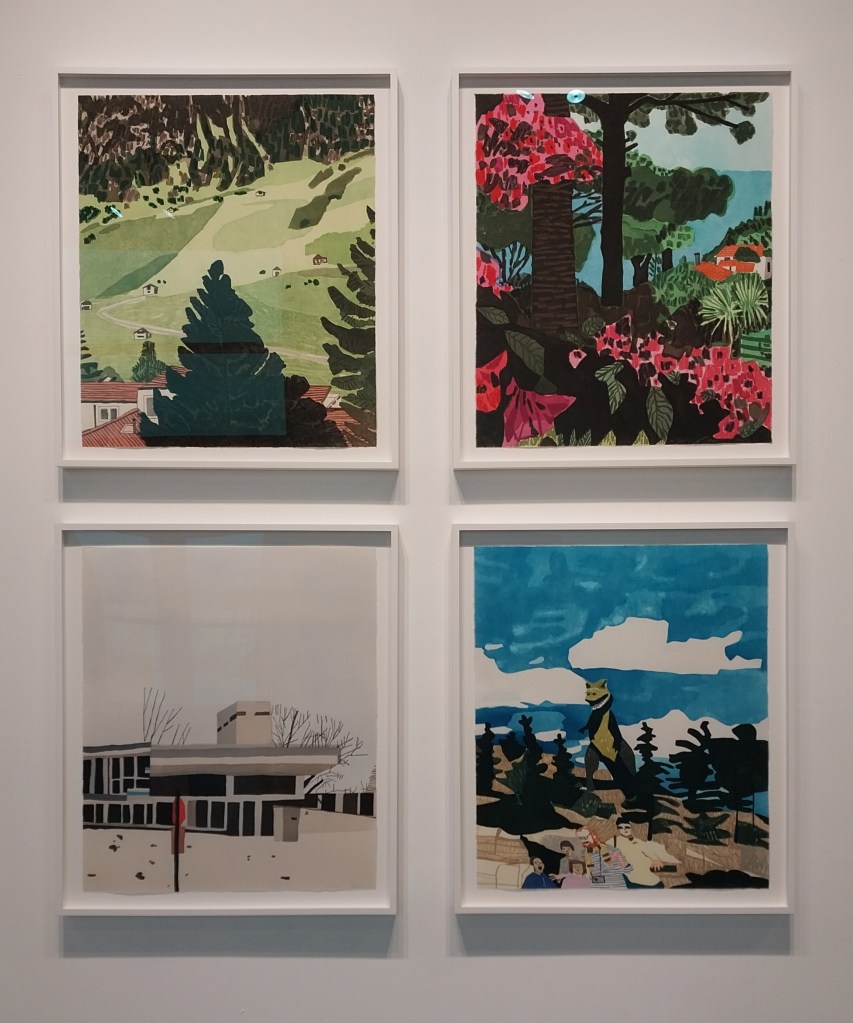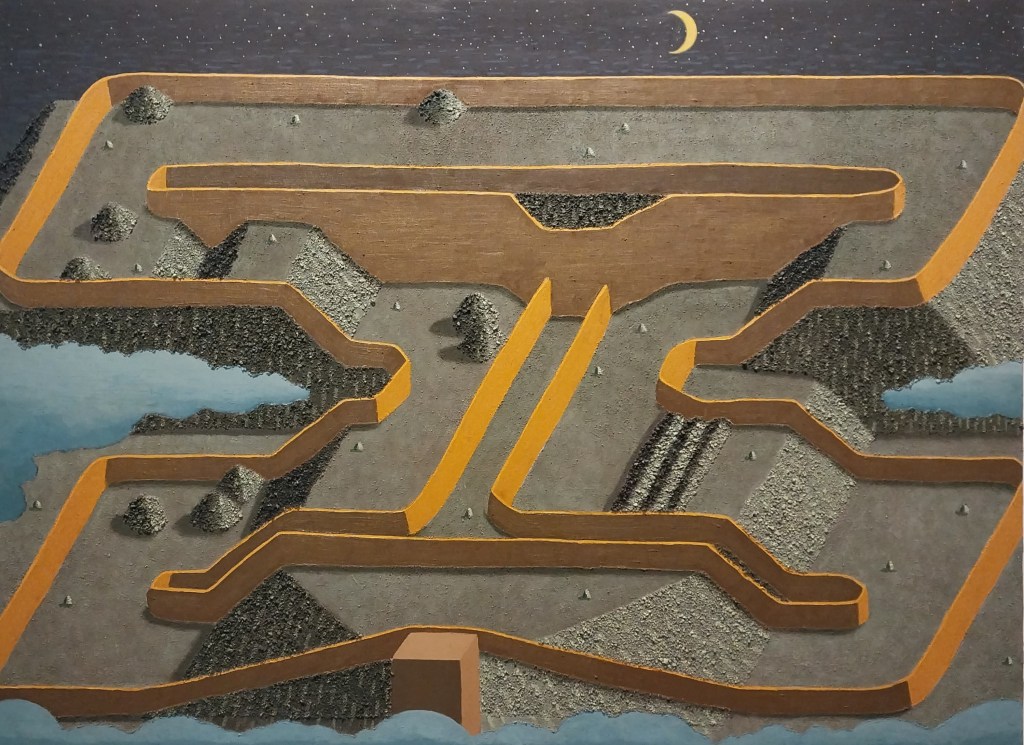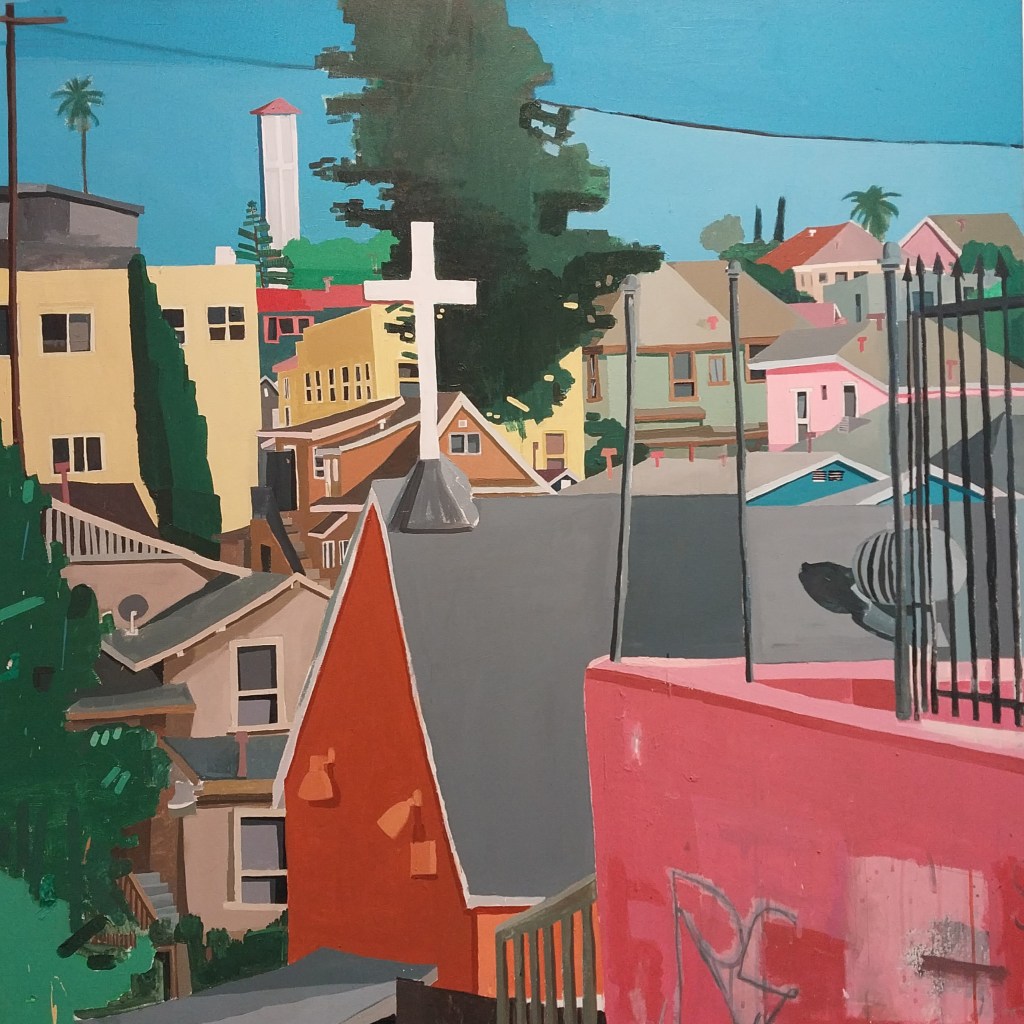In a city rife with artists working in the vein of traditional landscape painting, and often with considerable skill and sensitivity, the exhibition New Landscapes Part I, at SBCC’s Atkinson Gallery, stands apart and offers alternative visions. More precisely, the show offers six alternative contemporary landscape variations — the number of artists and artworks in this initial run in the two-part series.
Curated by the gallery director John Connelly, the selection highlights the diversity of personal artistic approaches to the time-honored culture of art celebrating landscape, seascape, and urban settings. Most of the pieces also come equipped with agendas reframing old norms and assumptions about what landscape art is and can be.
Whitney Bedford, also currently showing her work in the Santa Barbara Museum of Art’s Inside/Outside show in the contemporary gallery, supplies the Atkinson show’s epic centerpiece, “Veduta (Bonnard Mediterranean Morning) Triptych,” consuming one gallery wall. But despite its massive scale, the three-panel painting is less brashly monumental than it is meditative, with landscape and garden references layered and softened by a post-post-impressionist quality reminiscent of Pierre Bonnard’s palette and eye.

Directly across the room, another highlighted piece in the show moves in an entirely different direction: Manuel López’s smallish but dense painting “I CE(E) all them crosses, but where in the hell is Hey-Zeus?” depicts a compressed, zoom-lens-like view of an urban neighborhood (presumably in Los Angeles), with a central white crucifixion echoed by the similar form of a telephone pole apex in the margins.
Parallels to the loaded geometries and design instincts of the urbanscapes of artworld icons Charles Sheeler and Edward Hopper take on more contemporary and socio-politically charged dimensions given the painting’s title, with its allusions to immigration angst (via ICE) and religious skepticism. The visually appealing geometric tumble and vivid palette tease the eye, but this is anything but a neutral day-in-the-neighborhood scene.

Painting’s rich history and tangle of associations can’t help but leave imprints on the medium, even when contemporary artists seek to upend or redirect past influences. In Jonathan Ryan’s “Mist”, an aerial perspective looking down on a garden maze, variously refers to the impulse to neatly contain nature into such diversions as human-scaled mazes made from carefully manicured vegetation. Art-wise, Ryan’s deceptively tidy but logic-defying composition suggests a marriage between surrealist Rene Magritte and design confounder M.C. Escher.
Subtle subversion also sneaks into the scenery in Jonas Wood’s “Four Landscapes,” a quartet of paintings conveying the four seasons, but with the summer episode rendered tense by the presence of a large Tyrannosaurus. Is it real or a jumbo tourist-bait replica? The startled look on a vacationing family’s face leaves us wondering.
The one textile art piece in the gallery, Diedrick Brackens’s “Stealing dark from the sky” (from intricately woven cotton and acrylic yarn) hints at a native mythological narrative tucked into an image of silhouetted figures and a pastel pattern backdrop.
Purer nature appreciation rears its head in Cruz Ortiz’s “Karankawa Red Moon,” a rough-hewn painting of a red moon and stars reflected choppily in the ocean in the foreground. It’s a stylized tribute to natural, nocturnal beauty imbued with optical phenomena.
At the risk of putting a proud local-centric stamp on the arts’ particular and self-contained allure, one could easily imagine happening upon a similar sight at one of Santa Barbara’s many beaches. And so, we circle back to a central reason more conventional, realistic landscape/seascape painting has a strong impact in the 805: it’s in the water, and the land. Even so, art becomes meaningful and malleable when traditions are questioned and reshaped, a clear upshot of this fine exhibition.
Stay tuned for Part II.
New Landscapes Part I is on view at the Atkinson Gallery at SBCC through December 8. The gallery, located at 721 Cliff Drive in Humanities Building Room 202 on the East Campus of Santa Barbara City College, is open Monday–Thursday 11 a.m.–5 p.m., Friday: 11 a.m.–3 p.m., and by appointment. For more information contact Gallery Director, John Connelly at jconnelly1@pipeline.sbcc.edu. gallery.sbcc.edu








You must be logged in to post a comment.